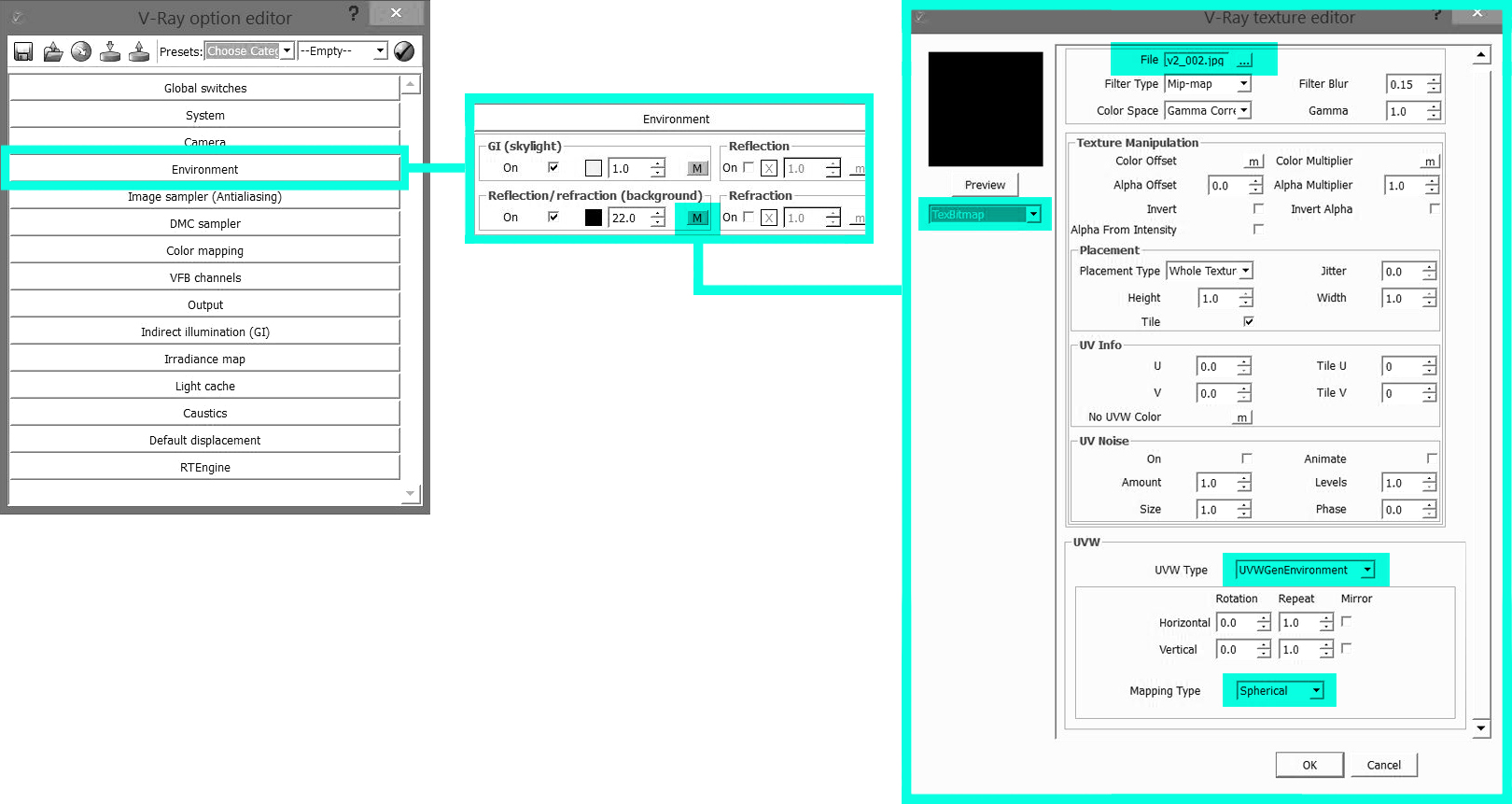

These are great for lighting outside vegetation as a decorative effect. The lights are angled upwards and give nice shadowy detail to the boundary wall. These are just instances as they normally don’t need to change that much. I’ve placed a few of these lights next to the boundary wall with an orange color and a high power value. The most common use of these is for creating spotlights with a natural falloff.
VRAY SETTINGS FREE
Search the internet and you’ll find dozens of free IES files published by lighting companies. These are a special type of lights that simulate real world lighting fixtures using. The landscape can be lit using the VRay IES lights. Further up we’ll add some IES lights to our landscape. I’ve added lights at the edges of the stairs and the ceiling folds as well to accentuate the character of the house. Vary the intensity and color of these lights a bit. Next up we’ll add a couple of similar lights over our entrance doors. I’ve also varied the intensities of both the rooms with values of 50 and 65 for a natural feel. I’ve placed a basic invisible area light on the ceiling for the room illumination. A warm yellowish light for the rooms will work best for this dusk setting. The trick to adding interior lights is in adding them one by one and doing region renders. Adding Interior Lightsīefore we begin adding lights to our interior, we need to exclude our glass objects from the override material. Oh, and adding a VRay infinite plane is a good idea for getting a proper horizon line. With the HDRI and VRay Sun combined, we’re ready to take a test render. Long angled shadows are important for any scene because they provide a depth cue to the viewer. This will add some nice soft shadows to our scene. We’ll set the size multiplier of the VRay Sun to 6 and intensity to 0.5.

This can be done by placing a new camera facing towards the sun and rendering both the lights separately and then drawing a comparison. Align the position of the Vray Sun close to the sun in the Dome light. We can place an additional Vray Sun as the exterior light to complement our HDRI setup. It might not change the scene much, but it has more to do with the feeling of the image.Ĭheck out my Tutorial on HDRI for getting a better grasp over using the VRay Dome light. I’ve also added a bit of lens distortion to the VRay physical camera for getting that subtle realism.
VRAY SETTINGS ISO
Since this is a twilight HDRI, the ISO for the camera has been doubled and thus illuminates the scene better. The vertical and horizontal tilt settings can be creatively used to give the house some character and composition. Strike a balance between the sky and the foreground in the camera frame so that none overpowers the other. The height is close to that of a person, while I’ve set the focal length to a wider 30mm value. I’ve placed it in front of the house at a slight angle to the right. The placement of the VRay physical camera is also an important step of this process. In the current setup the sun is placed at the back of the house and so we’ll get soft ambient lighting. Assign the sky map to the texture slot of the Dome light. The higher the range, which is measured in f-stops, the better the lighting it provides. The most important point while choosing HDRI maps is the exposure range.

Other alternatives include HDRI-Hub and Viz-People. In this tutorial I’ve used one of Peter Guthrie’s excellent HDRI maps. The first thing we need to do is add a VRay Dome light with and HDRI sky map. The rendering settings are pretty basic for testing the lighting of our scene. Getting the perfect light balance will ensure that our materials and the final scene look amazing from the start. The vegetation has been kept to a minimum for fast test renders. This stuff is the first step to Photo-realistic Render with VRay – Make sure you render it with OverrideMtl and VRayEdgeTex to get fast results and concentrate on what’s important – BALANCING THE LIGHT!įor the purpose of lighting our exterior scene, I’ll be using this house model with a light grey Override Mtl with dark grey VRayEdgeTex. If you follow these steps right you’ll get any image to look amazing. At the end – Quick post work tricks for getting it Right!.Creating landscape lighting by choosing the right IES.Adding artificial lights and populating them organically.Placing VRay Sun and matching it to Environment.Ambiance light of the scene by using HDRI Map.After setting up a VRay camera and choosing the right angle we start balancing the light: We are going to concentrate on the most important thing – balancing the all the aspects of light in the scene. In this video tutorial I’m going to show you my Step-By-Step method for setting up an Exterior Scene – which will display your Architecture in the most Brilliant way by using 3DsMax, VRay & Photoshop.


 0 kommentar(er)
0 kommentar(er)
